Hoda Katebi On Dismantling Orientalism Through Fashion, Art, And Activism
By: Atoosa Moinzadeh
![]() “Fashion is an incredibly powerful form of communication,” says Hoda Katebi. And for the 22-year-old Iranian Muslim, the personal is inherently political. As the founder of fashion and social justice blog JooJoo Azad, she’s created a platform to directly challenge the norms of the industry.
“Fashion is an incredibly powerful form of communication,” says Hoda Katebi. And for the 22-year-old Iranian Muslim, the personal is inherently political. As the founder of fashion and social justice blog JooJoo Azad, she’s created a platform to directly challenge the norms of the industry.
“I really wanted to reclaim fashion as a more political and meaningful, substantive form of art, through the experiences I had,” she said. “I asked myself, Why am I waiting to be invited into these spaces when I could just create one myself?“
![]() Among a number of accolades, the University of Chicago grad is the author of Tehran Streetstyle, “the first-ever in-print collection of street style photography from Iran aimed to challenge both Western Orientalism and domestic Iranian mandatory dress codes.” Currently based in Chicago, Katebi spoke with Distinguished Diva about her blog’s beginnings, Orientalism and identity, and how she’s using her voice to bridge the gap between art and politics.
Among a number of accolades, the University of Chicago grad is the author of Tehran Streetstyle, “the first-ever in-print collection of street style photography from Iran aimed to challenge both Western Orientalism and domestic Iranian mandatory dress codes.” Currently based in Chicago, Katebi spoke with Distinguished Diva about her blog’s beginnings, Orientalism and identity, and how she’s using her voice to bridge the gap between art and politics.
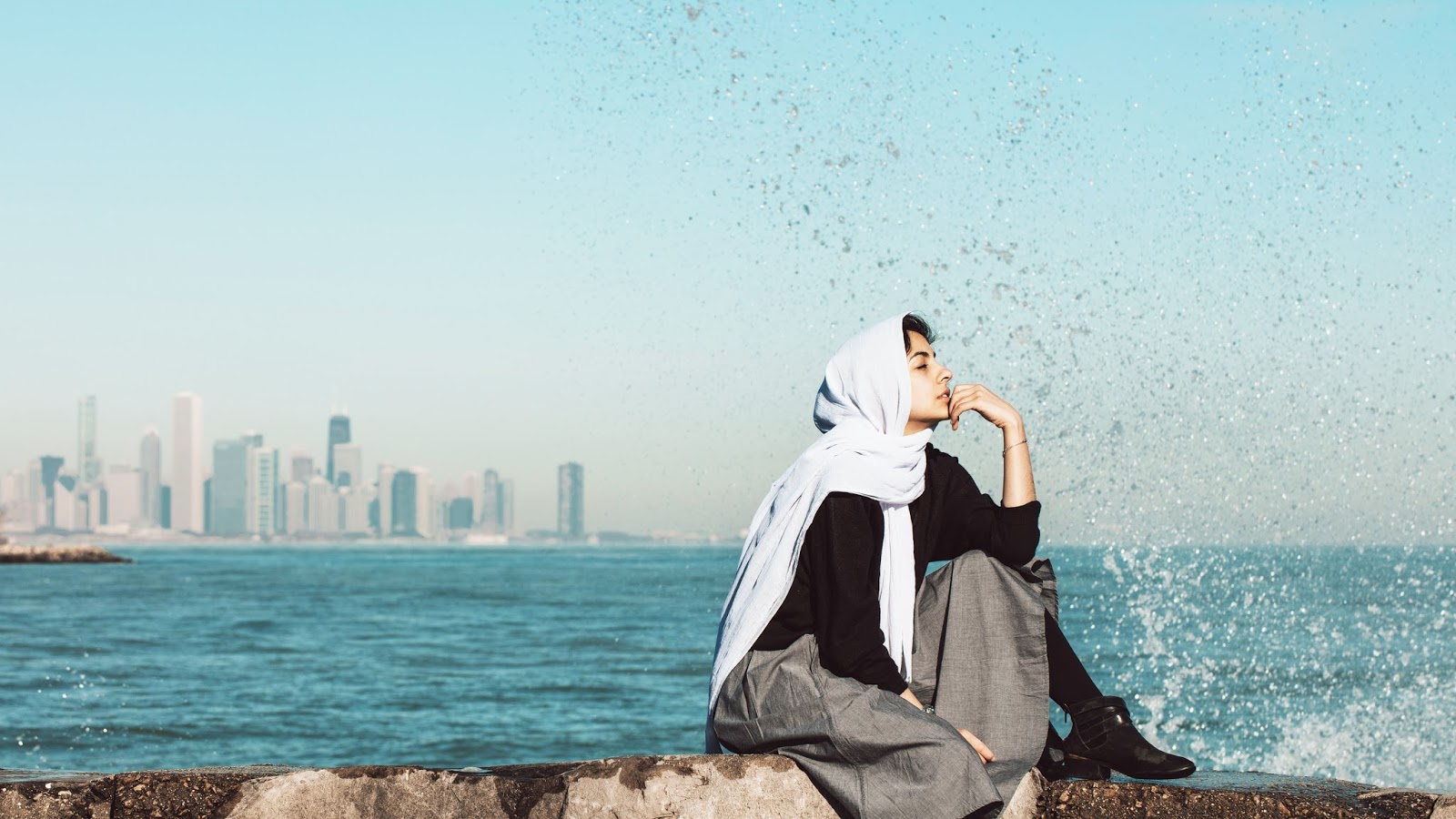

Tell me a bit about your background, and where you grew up.
H: I was born and raised in Oklahoma, in a very homogeneously white and racist neighborhood. Both of my parents immigrated from Iran, after the Revolution, but not because of it. That’s the setting I was growing up in — there’s not a huge Muslim or Iranian population there. It was definitely the kind of thing where people knew who we are, and people would make comments when we walked into the store or went to school. And that was a huge part of my life, whether or not if I liked it to be.
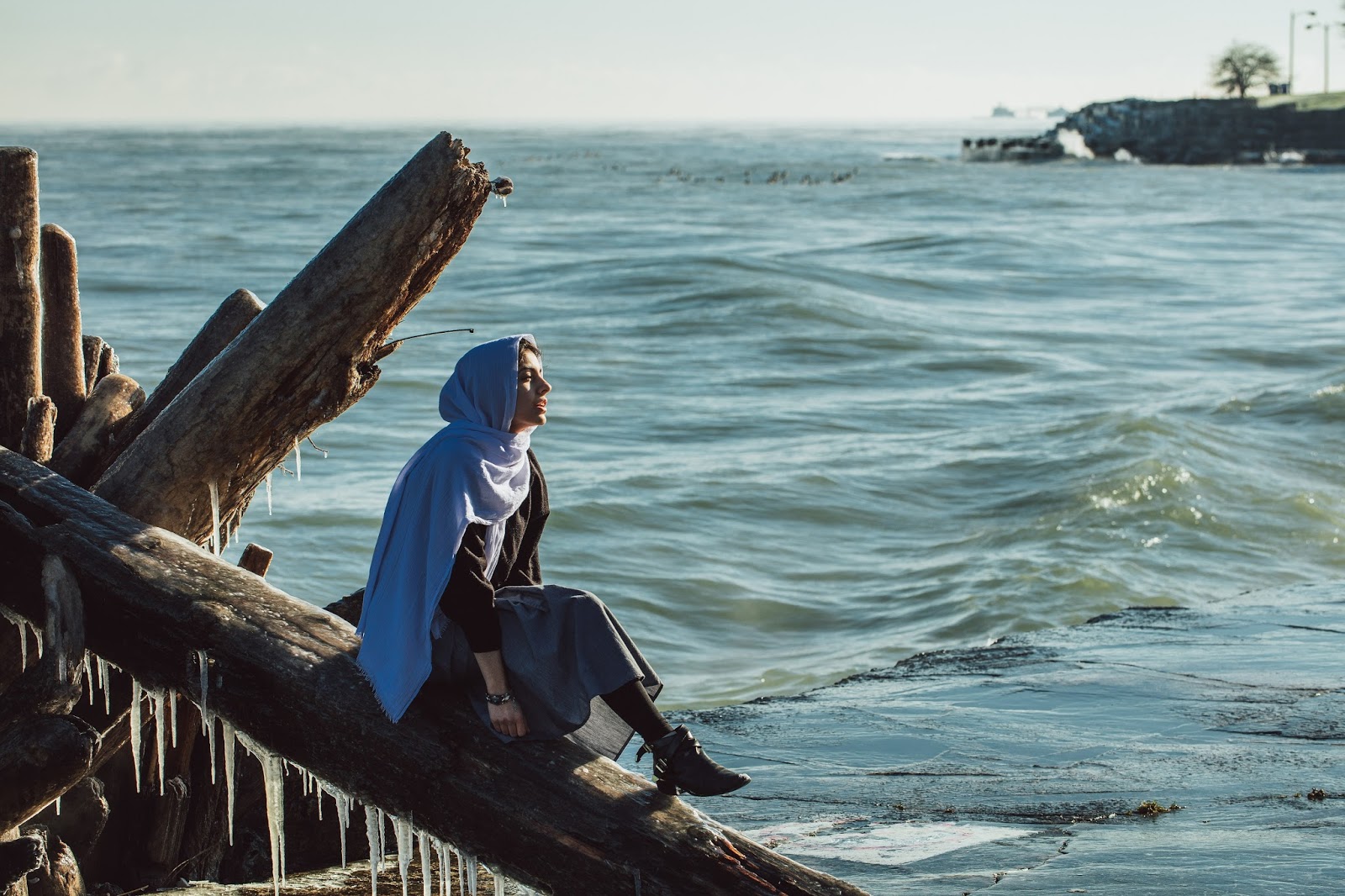
How early in life did you find yourself drawn to fashion, and what inspired you growing up in the fashion world?
H: For me, fashion has always been really political. That’s a result of growing up as a person who stood out due to the way I dressed, and that made me really start thinking about the power of fashion, and how you present yourself and your body for public consumption really changes the way people look at you and interact with you. It’s highly politicized due to the choices I made around how to present myself. In hindsight when I was in college, reflecting on my experiences in Oklahoma, I realized, Wow, fashion is an incredibly powerful form of communication. We always view the fashion industry as vain, or shallow, and for that reason, it’s overlooked. We only think of it as vacuous, because of this patriarchal notion of women’s work — industries that are predominantly run by and filled with women are not valued, be it child rearing, emotional labor, or fashion. I really wanted to reclaim fashion as a more political and meaningful, substantive form of art, through the experiences I had.
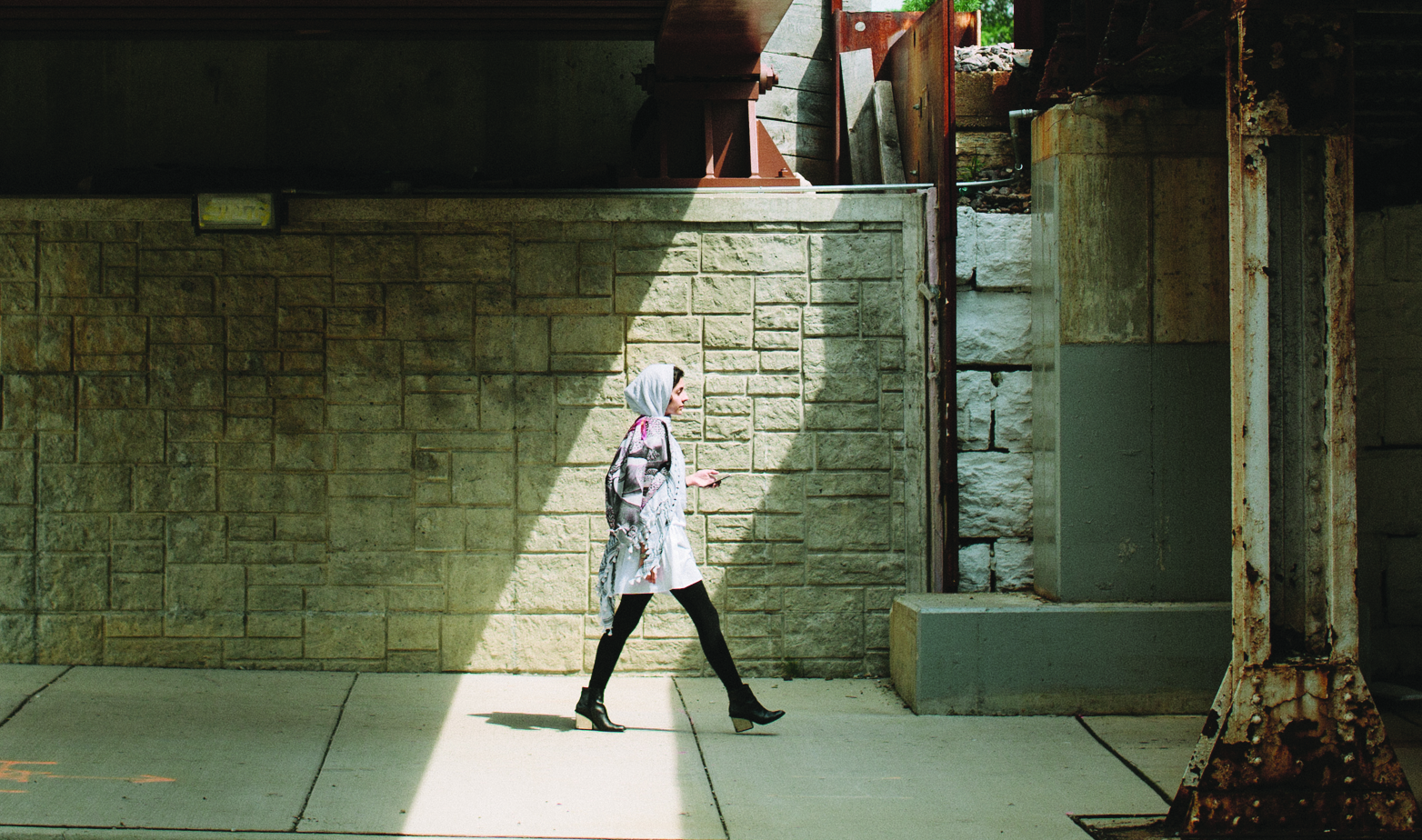
As a Middle Eastern, hijab-wearing, Muslim woman, I want to learn more about how your identity interacts with that fashion world. Because ultimately, that’s what your work on the blog is addressing, right?
H: Yeah, honestly I felt like I didn’t have a choice. I was asking people if I could write for them, or work with them, and I asked myself, Why am I waiting to be invited into these spaces when I could just create one myself? For me, it was a way to take up space very intentionally, and use fashion as a way to talk about social justice issues, and merge two worlds, and two interests of mine — fashion and politics, fashion and social justice — that seem like they are worlds apart, but are so intrinsically and intimately connected. More specifically, after everything I’ve gone through in Oklahoma and growing up, I wanted to create a space where I could basically yell online, and force people to listen to me. That’s the more immediate, overarching, and specific reasons I started Joojoo Azad.
Around that time, I had also heard a specific story about a Muslim woman in France who was subject to a hate attack who lost her baby. When she was being attacked, she yelled, I’m pregnant, I’m pregnant! under the assumption that these people had the humanity to save her child. But instead they had started kicking her stomach and she ended up having a miscarriage. It’s these intense layers of misogyny, racism, and xenophobia, that really, in that story, stuck a deep chord in me, and I wanted to work on challenging that.
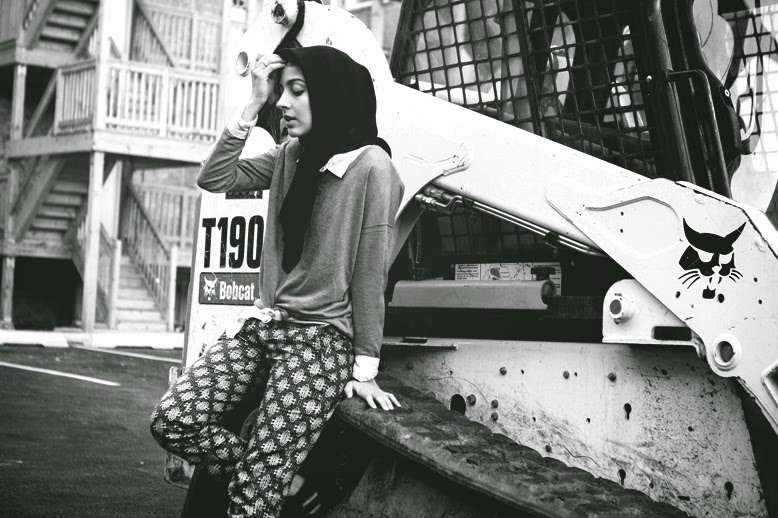
You mentioned how fashion is political—our bodies, and how we participate in that, are political—and Joojoo Azad really interacts with that directly. How did you build this blog up to be so large, and engage with those who disagreed with you?
H: My target audience was mostly just white materialistic racist girls, and that’s who I wanted my readership to be, because of that I made Pinterest, certain social media accounts, collaborate with certain brands, to reach those people. I wanted to use this platform to get in these spaces and not just preach to the choir — even though I knew it would be exhausting, or I would receive vitriolic reactions — and surprisingly I got positive responses. It was hard to collaborate with certain brands because at that time the hijab wasn’t as sexy of an identity as it is now, [laughs] right now everyone wants to be Muslim, which is problematic in its own sense. But at that time it was more difficult, brands didn’t want to be tainted by the image of a hijab-wearing woman. So I had to prove myself through my work, and force my way into spaces that didn’t want me, and say Too bad, I’m already here. I tried to be down to earth, honest, and genuine in speaking about these issues, which I think had people wanting to engage and share. I think some folks were learning things like, Wow, I guess Muslims aren’t terrorists, or I guess Jihad doesn’t mean that. It’s becoming more and more political, and less about directly challenging Orientalism and Islamophobia, and more of a space to celebrate my people, my culture, my religion, and in doing so, challenging all these things.
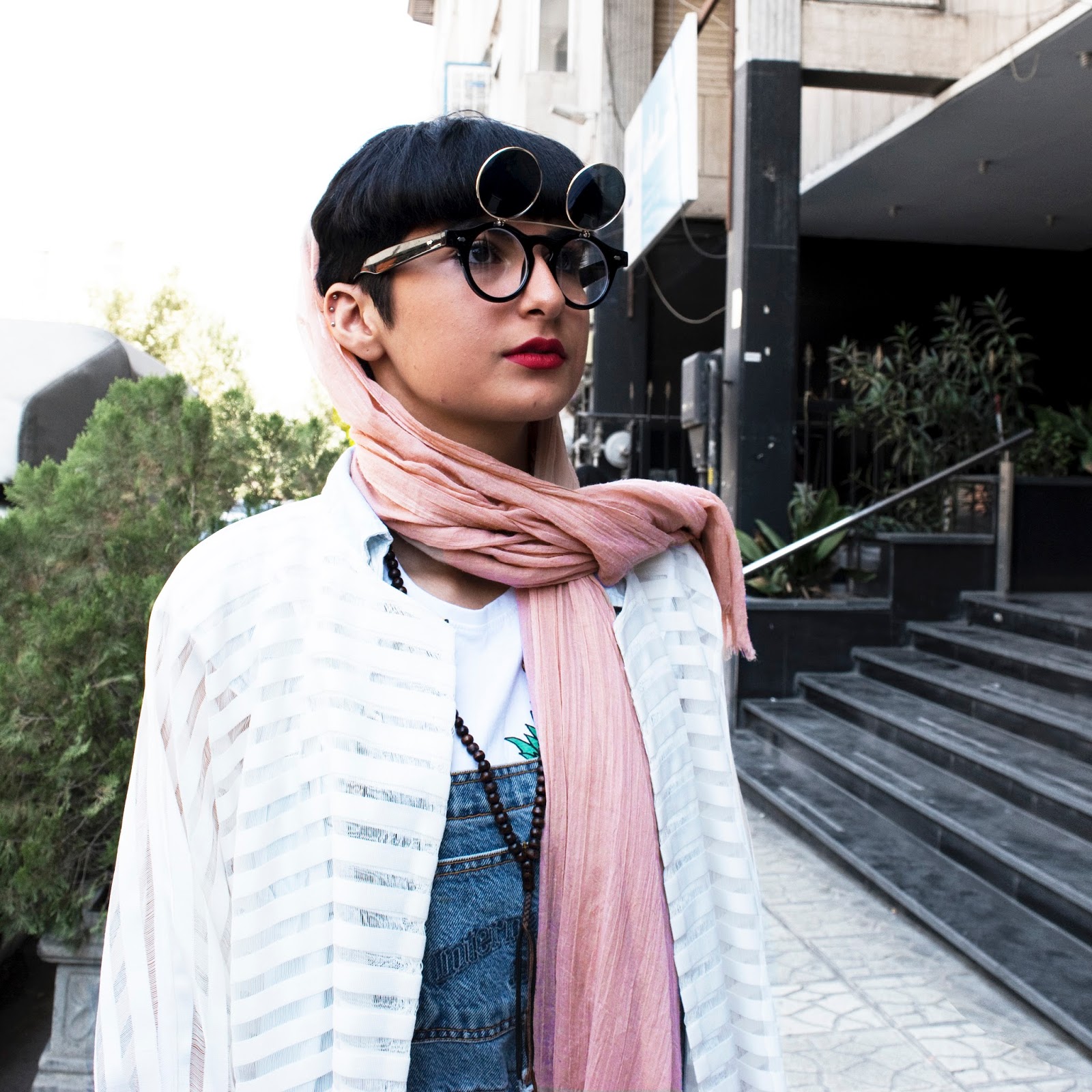
A lot of these topics are complex and loaded — how do you work to make these topics digestible for your readers?
H: I think that’s a great question, and that’s why I’ve chosen the medium of art and fashion because it makes these subjects that much more accessible and relatable. For example, the second most recent post right now on JooJoo Azad is called “From Fashion To War”—and that talks about how something you wear on your back could be related to the empire. Having these conversations through fashion, bridging that gap between art and politics, is so important to me. I don’t want to just be having these conversations with intellectuals and in Ivy League Towers, I want to be talking about this with every single person who will come on my website, and I want them to be able to have a conversation with me, and not feel like the words are too big or concepts aren’t broken out tonight. That’s even an issue in the activist leftist community, too. How can we reach our people, take people off their high horse, break things down, and make these concepts real? Using art to do so is where my blog sits, at that intersection.
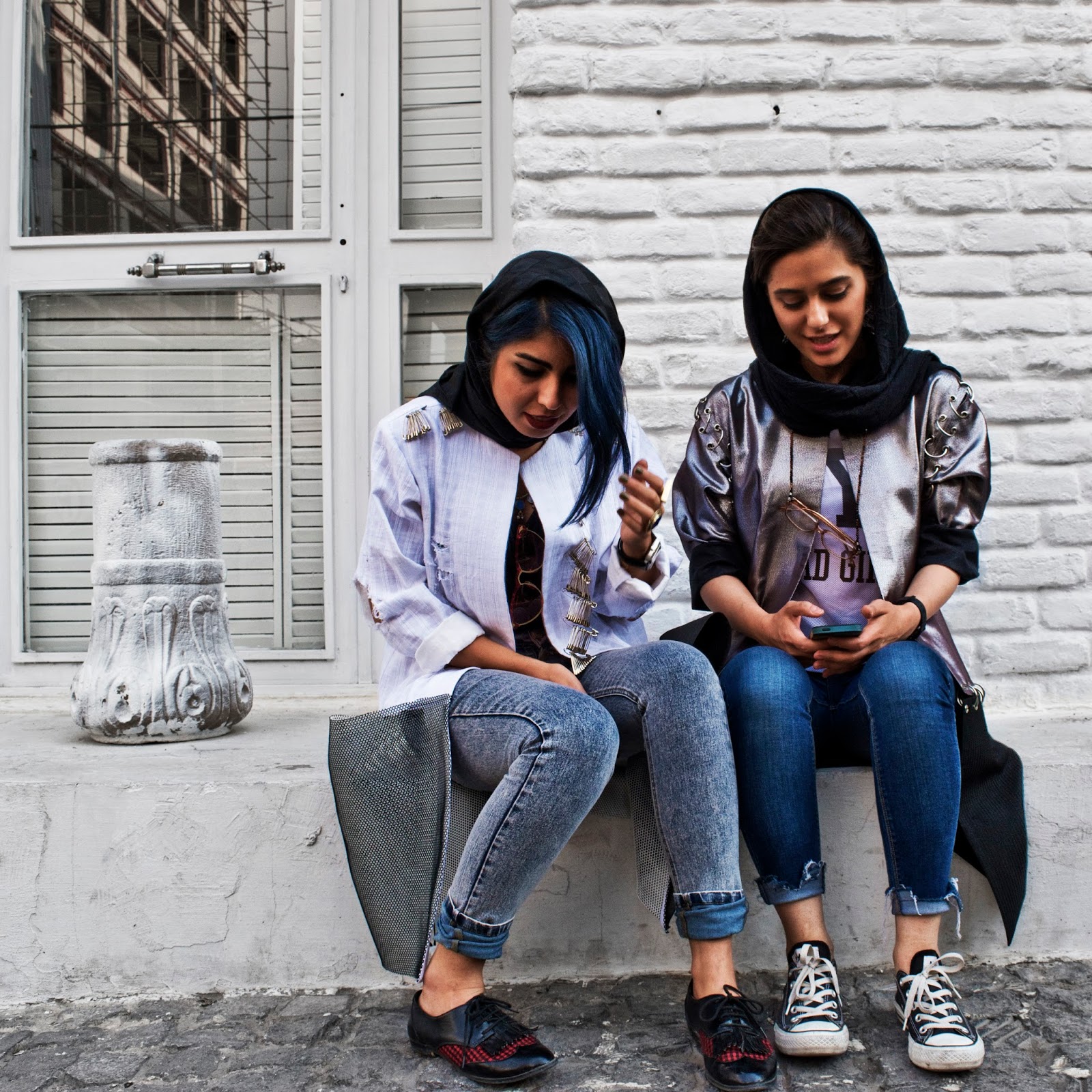
When you studied at U Chicago, I saw you focused on Iran’s underground fashion movement — how did that inspire you and your work?
H: The shift I mentioned, from overtly challenging norms to celebrating my people, came from my time researching in Iran. When I was doing research in Iran, asking these underground fashion designers questions for hours, my final question would always be What can I do for you now that I’ve taken up so much of your time? And all of them across the board said they appreciated the work of challenging Orientalism and Islamophobia but don’t see enough of that celebration. They mentioned that inspiration can really go both ways, and that was really powerful for me.
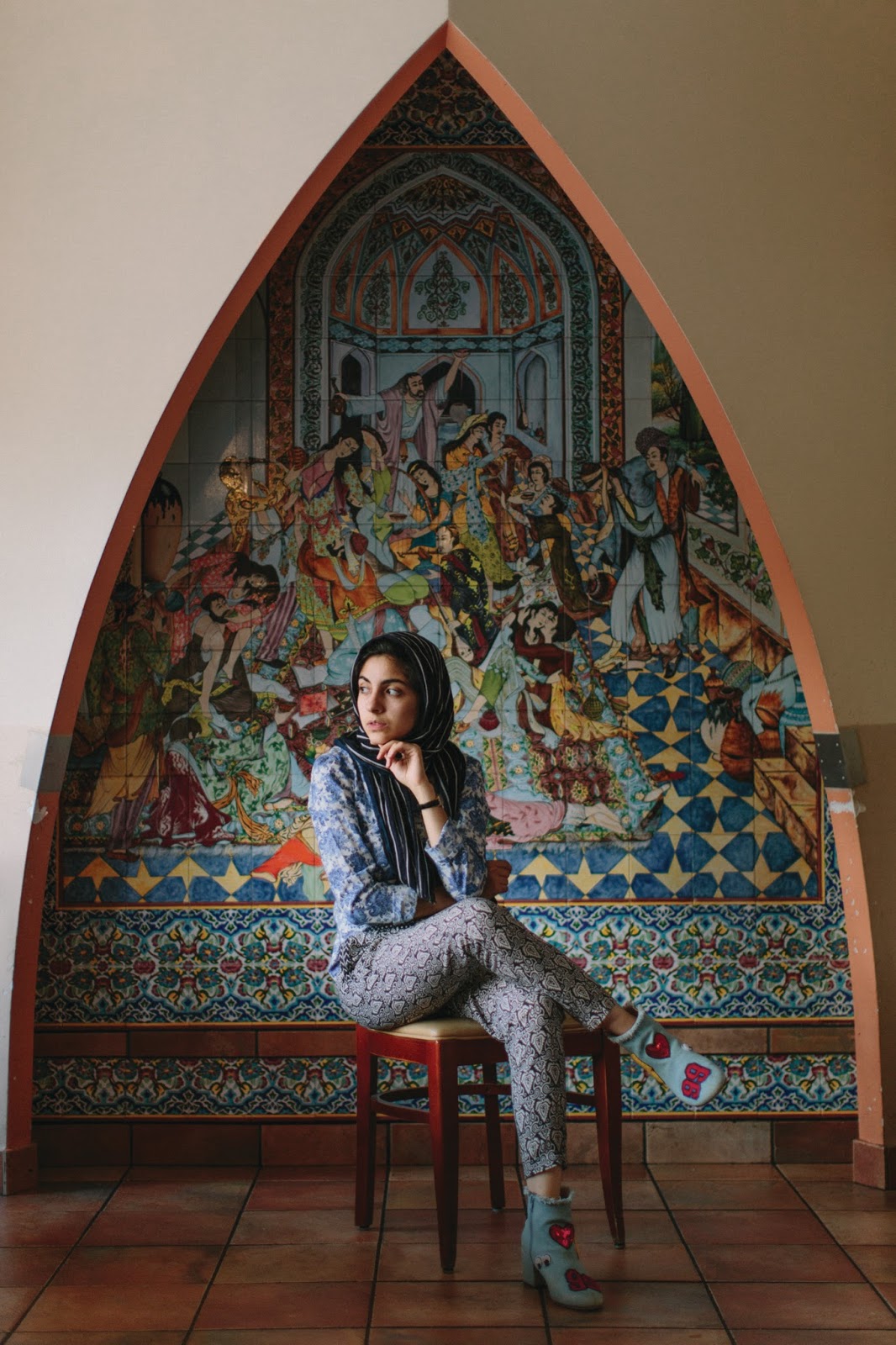
It’s definitely important to balance critique against celebration — and we’re constantly coming up against that as marginalized people.
H: Definitely. I think that’s so important and totally possible. And when you work to re-complexify everything that’s always been so simplified, and I think that’s where a lot of this violence is happening — we just want to pick a good and bad, what’s evil and heroic, if the government is good or bad — but there’s so much complexity in everything. But to be able to sit at the center of that, and untangle that through your work, I think that’s what’s been really helpful for me, and sitting at the intersections. It’s saying, Yes, I want to celebrate my culture as an Iranian, but also, How can I call out mandatory hijab laws? Or other problematic things the government is doing.
In the face of brands like Nike releasing an athletic hijab, for example, and the increase of discourse around representation, how do you feel about these issues being more “mainstream”?
H: The whole scene has really shifted — I can’t necessarily say for better or worse, because yes, our faces are being included more but our voices are still not. Initially, when brands would reach out to collaborate, they would talk about how they appreciated the aesthetic and values behind my blog, but now it’s turned into this, You’re a trend, how can we tap into that kind of thing. It feels like empty, vacuous commodification of image and identity that is happening right now. The hypocrisy is that when you look at who is being hurt the most in the production of these garments, it’s Muslim women in factories in Bangladesh or India. It’s very clear that it’s just a trend, or there isn’t much substance behind this inclusion. Inclusion, but at the expense of who?
What are your goals for JooJoo Azad going forward?
H: Right now I’m working on a clothing line, inspired by Islamic architecture in Iran, and it’s going to be highly politicized — it’s still in the works, but it’s going to be good. And I want the blog to grow and find more ways to reach people to have these conversations.
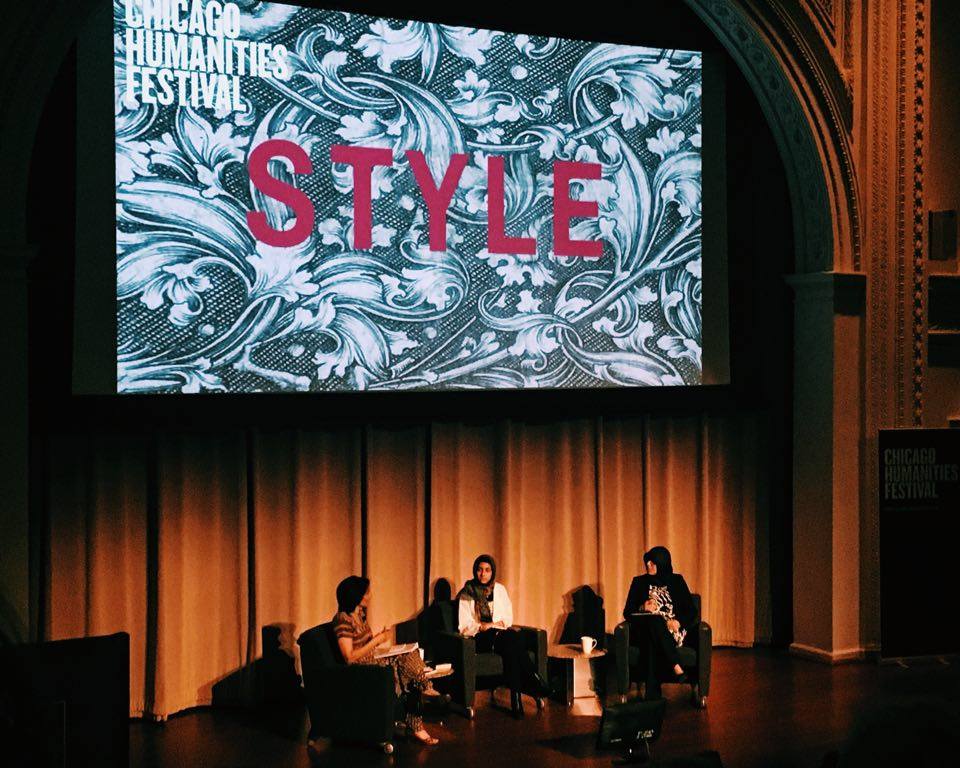
JooJoo Azad translates to “free bird” — can you explain its significance for you?
H: I first and foremost wanted my blog name to be in Farsi because A. It’s framing my space. The space I’m carving out for myself on the internet is not going to be in the language of my oppressors. B. I wanted the way that English was forced down my throat, and the throats of my immigrant parents, I want it forced down their throats. I knew it was bad branding because no one would randomly google it, but it was pretty integral to make it in Farsi. Also, I knew the first thing people were going to see is that I wear hijab, and so I wanted to address that right away in the title. To me, JooJoo Azad is about freedom of capitalism, consumption, Orientalism, patriarchal standards. So it’s really asking, Where can our liberation take us?
Images from JooJoo Azad
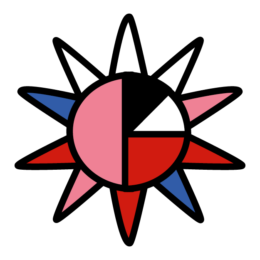
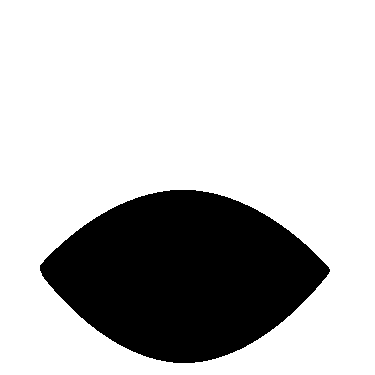
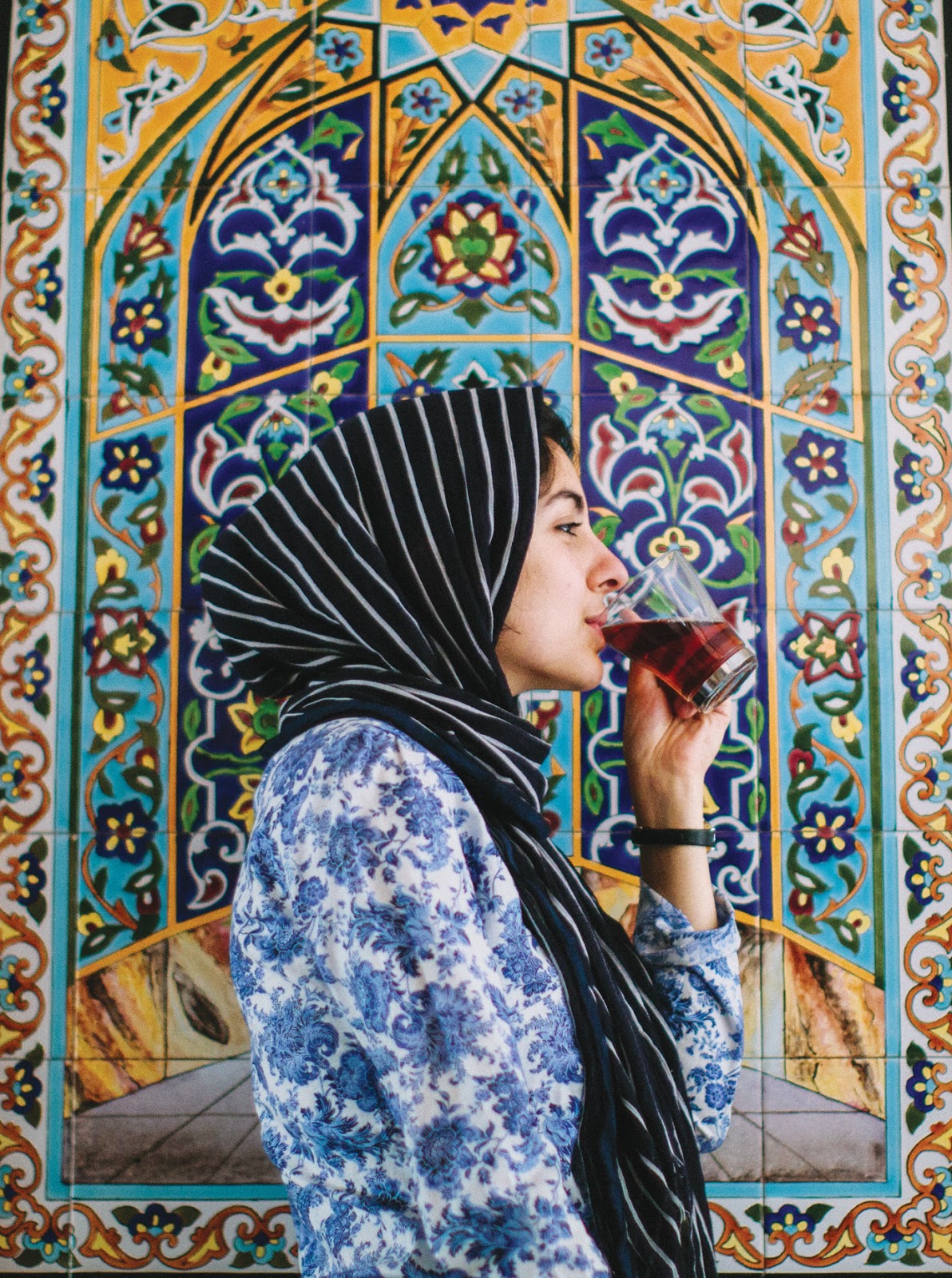
8 Comments
Join the discussion and tell us your opinion.
I love this! Fashion can be political! Great read
It’s pretty cool that she was able to create a space for herself and merge two topics that many would think don’t work together. I love that she’s creating a clothing line specifically for Muslim women. Good for her! Great interview!
It’s interesting how the people who know that fashion is political, are always the ones that are targeted for their fashion with covering up, or dressing what can be described as modestly. I hate that people have to have the way that they dress questioned in any form, but to make it political, and the crux of violence in so many cases makes me sad. Great interview as usual!
Beautiful how she has stayed so connected to her roots despite the setting in which she grew up. I hope that “Free Bird” continues to soar of be of extreme influence!
This is such a great interview. It’s very eye-opening. I definitely have to start following her.
Fashion is definitely political. This is a great interview. I appreciate the beauty of her words.
This is a great article! You asked interesting, in depth questions that have piqued my interest in reading Hoda’s blog! Kudos to her for starting this movement and being “loud”, bringing attention to major issues through art, fashion. Sadly, I agree that Islam is a current trend in mainstream media and not many non-Muslims are paying attention to what’s really happening against Muslim women. Great interview! Great work Hoda and best wishes to you both! I love your quote, “Why am I waiting to be invited into these spaces when I could just create one myself?”
Great interview, Hoda’s story was quite compelling. These pictures are so dope!